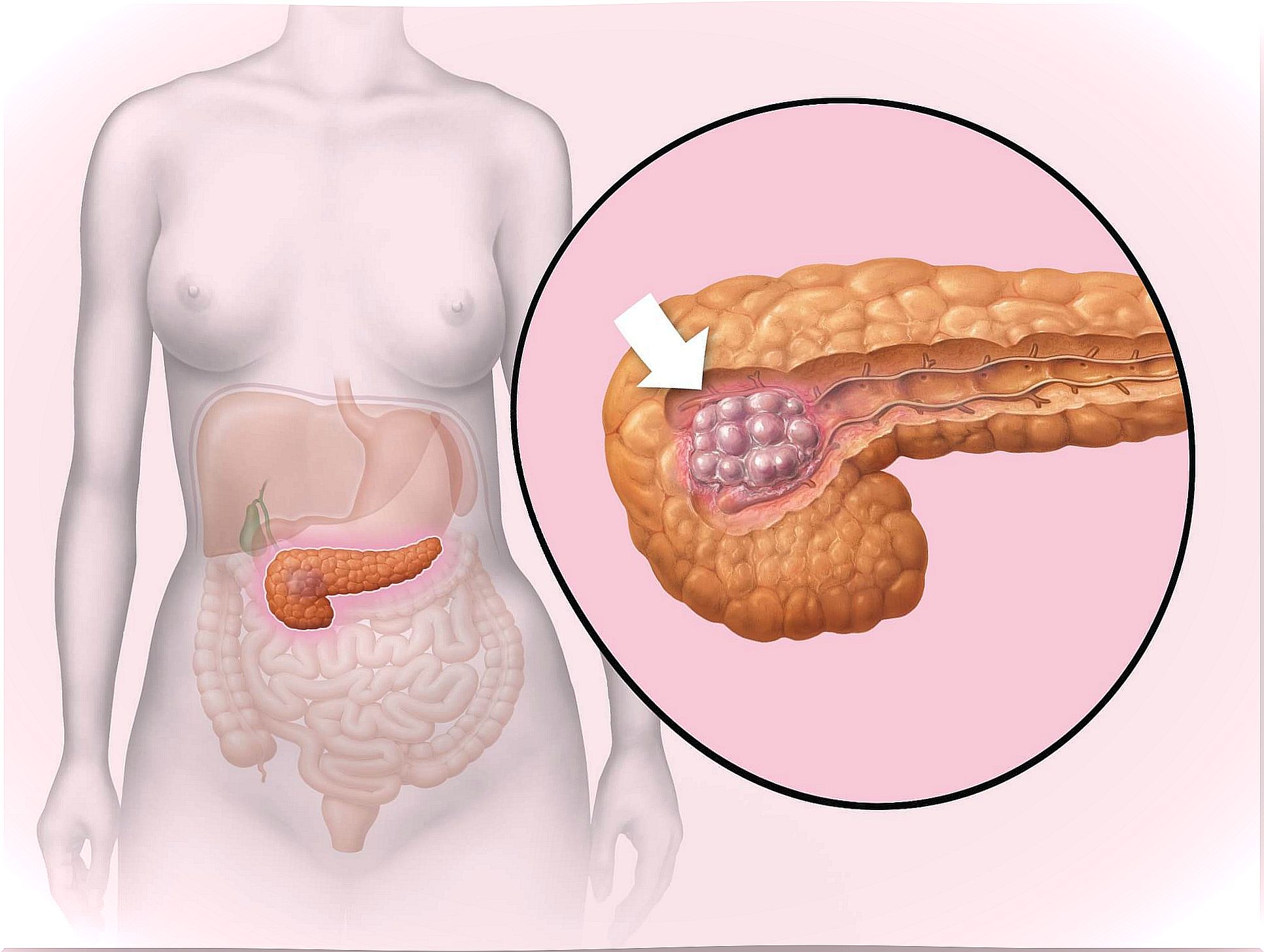First Hormonal Symptoms Of Pancreatic Cancer
Pancreatic cancer is a disease that affects both male and female patients, at any age. However, it is usually more common in older men.
The cause has not yet been determined. However, several risk factors have been determined, among which we can mention age, smoking, obesity, diabetes, pancreatitis, among others.
Brief review about the pancreas
The pancreas is an elongated organ that sits behind the stomach. It fulfills important functions within the maintenance of the body. In this way, we can differentiate two types of cells in the pancreas:
- Endocrine. They are usually grouped in the form of islets of Langerhans and produce hormones that they release directly into the blood. They normally produce insulin and glucagon, compounds capable of regulating the amount of glucose in the bloodstream.
- Exocrine. Cells synthesize enzymes that travel to the duodenum through tiny ducts. They join to form the pancreatic duct, which joins the bile duct (coming from the liver) to the small intestine. The enzymes produced collaborate in the digestion of certain nutrients such as lipids or fats.
Types of pancreatic cancer
Two types of pancreatic cancer are distinguished according to the type of cells affected. In this way we find:
- Exocrine pancreatic cancer. It is the most common subtype of pancreatic cancer. In most cases, it develops from cells that produce digestive enzymes.
- Pancreatic or neuroendocrine endocrine tumor (malignant or cancerous). It affects the cells of the islets of Langerhans that produce hormones and release them directly into the blood. We can differentiate between different subtypes depending on the type of cell they affect (see the most frequent symptoms).
Most common symptoms of pancreatic cancer

The experts of the Spanish Association Against Cancer (AECC) explain that, in its initial phase, people with pancreatic cancer do not usually have symptoms. However, as the disease progresses, various symptoms may appear, such as unexplained weight loss, jaundice, diabetes, pain in the pancreas area, constant tiredness and fatigue, nausea and vomiting, among others.
On the other hand, it is necessary to clarify that the symptoms may vary depending on the type of pancreatic cancer that the patient presents.
Exocrine pancreatic cancer:
- Nausea and vomiting
- Tiredness and constant fatigue.
- Loss of appetite or loss of appetite. This usually causes a decrease in weight of the patient without intending it.
- Enlargement of the gallbladder or liver.
- Abdominal discomfort that can spread to nearby areas (such as the back).
- Jaundice or skin with a yellow hue. This is because the cancer blocks the common bile duct and bilirubin builds up.
- Bilirubin is a pigment produced by the liver that normally reaches the duodenum through this tube.
- Other related symptoms are darker urine and stool changes.
Discover: High Blood Bilirubin: Causes, Symptoms and Treatment
Among the hormonal symptoms we can highlight :
- Changes in the texture of the patient’s fat tissue. This disorder is due to the wrong release of pancreatic enzymes.
- Diabetes. In this case, the exocrine cells destroy the cells that synthesize insulin. Therefore, glucose levels in the bloodstream increase and the characteristic symptoms of this disease also occur.
- Mild alterations in blood glucose levels.
Pancreatic or neuroendocrine endocrine tumor (malignant or cancerous): depending on the type of cell that has developed the cancer. In this way, we can find:
- Gastrinoma The disease occurs in the cells that produce gastrin and increases its production. As a general rule, this substance causes more acid to be synthesized within the stomach. This disorder is known as Zollinger-Ellison syndrome.
- Insulinomas. It affects the cells that form insulin, which increase uncontrollably. The symptoms produced are associated with hypoglycemia or low blood glucose levels.
- Glucagonomas. In this case, the cancer is found in the cells that produce glucagon. In this way, the signals are associated with hyperglycemia or high blood glucose levels.
- Somatostatinomas. Somatostatin normally helps regulate other hormones. When the pathology occurs, it is possible that the levels of these substances are altered at a general level.
- PPomas. They are associated with an overproduction of pancreatic polypeptide (PP) that regulates the functions of the pancreas under normal conditions.
- VIPomas. It disrupts the cells that synthesize vasoactive intestinal peptide (VIP). The most notable symptom is diarrhea that persists over time.
The work of the doctor
Once a person is diagnosed with pancreatic cancer, the doctor will indicate the most appropriate treatment options. Depending on the case, the patient will be presented with specific alternatives or others. It should be noted that in some cases, more than one type of treatment can be used to care for the patient.








